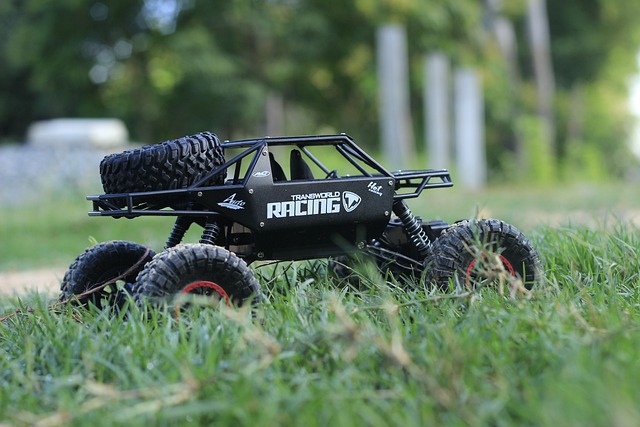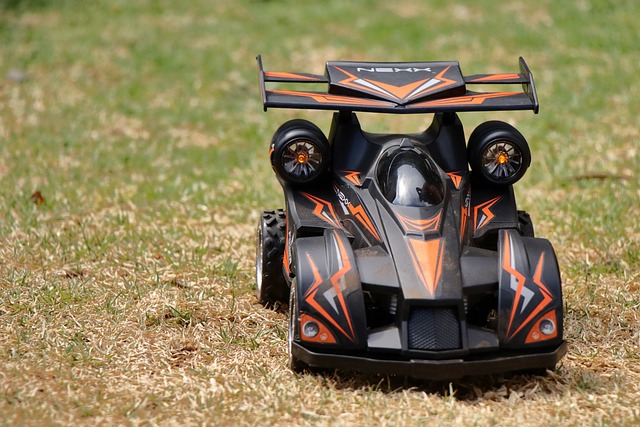Login
Join Free
Choosing a Safe and Fun Remote Control Car for Kids: Essential Tips
Remote control cars have become a must-have toy for children in many households, beloved for their excitement and fun. Choosing the right one, however, can be tricky. In this guide, we'll walk you through everything you need to know about selecting a remote control car for kids. From safety considerations to different types and features, by the end, you'll be equipped to find the ideal remote control car that will bring joy to your child's playtime.
Overview of Remote Control Cars
Toy remote control cars, also known as RC cars, are model vehicles that can be remotely controlled using a radio transmitter. Depending on their body styles, they can be categorized into off-road vehicles, monster trucks, dump trucks, and more.
Remote control toy cars achieve remote operation through a transmitter that includes a chip. When the operator presses a button, it sends out a unique code via radio waves. The car is equipped with a receiver module and a decoding chip. The receiver module captures the radio signal and converts it into different codes, which the decoding chip translates into specific operational commands. These commands are then amplified through circuits to drive various mechanisms on the car to perform corresponding actions.

Essential Considerations When Choosing the Right RC Car for Children
1. Safety First: Well-Bonded Parts
It is crucial to choose a car with well-bonded parts. All components should be securely attached to prevent small parts from coming off, reducing the risk of children swallowing them. The gap between the drive wheel and the car body or any fixed parts should be greater than 12mm or less than 5mm to prevent children's fingers from getting caught.
2. Durability and Ease of Operation
Choose a car that is durable and easy to operate. Children do not know how to protect their toys, and complex operations can easily frustrate them, leading to damage.
3. Battery Type: Non-rechargeable Batteries vs Rechargeable Battery Packs
The battery type for children's remote control cars mainly comes in two varieties: non-rechargeable batteries and rechargeable battery packs. Non-rechargeable batteries are easy to purchase, while rechargeable batteries are generally included with the purchase and don't need to be bought separately, along with a charger. They can be replaced with multiple fully charged batteries as backups, offering slightly longer battery life. Generally, choosing the type of battery depends on the user's age. For younger children, it is best to choose cars that use non-rechargeable batteries, as charging components can be cumbersome and prone to damage, posing a danger if children handle them while charging. For older children, rechargeable batteries can be a suitable option.
4. Check for Manuals, Manufacturer Details, and Certifications
Make sure the product comes with a user manual, manufacturer's details, and relevant certifications. Many products nowadays are made from recycled materials, some of which may contain harmful substances, posing a risk to children's health.
5. Remote Control Distance
Parents often overlook asking about the remote control distance when buying a remote control car. The distance can range from 20 meters to 40 meters or more. In general, the price of the remote control car correlates with its remote control distance (excluding specialty remote control cars and fuel-powered cars). Therefore, it is essential to understand the remote control distance to ensure the child can fully enjoy the experience.
6. Performance Check: Wheels and Responsiveness
When the car is switched on, observe if the wheels turn at an even speed and whether there are any sudden reversals or stops. If everything appears normal, hold the toy in your left hand and press the sound button with your right hand to see if the wheels suddenly change direction, checking the responsiveness of the switch actions. Test the toy's anti-interference ability by placing it about 1 meter away and gently whistling or talking to see if it reacts.
7. Control Actions
Remote control cars have multiple control actions. When choosing, test each action individually for responsiveness. Pay special attention to fully extending the transmitter's antenna when starting the test. Once everything checks out, gradually shorten the antenna to observe any reduction in control distance. Generally, when the antenna is shortened to half its full length, a one-third reduction in control distance is normal. For children under six years old, single-channel remote control toys are sufficient. They have simple actions and a single button on the transmitter to control one action, such as switching from forward to backward. For children over six years old, multi-channel remote control toys can be chosen to help them develop more complex control skills.
Precautions for Buying Children's Remote Control Toy Cars
1. Wheels and Speed: When the remote control car is switched on, check if the wheels turn at an even speed and whether there are any sudden reversals or stops.
2. Responsiveness: If everything checks out, hold the toy in your left hand and press the sound button with your right hand to see if the wheels suddenly change direction, checking the responsiveness of the switch actions.
3. Anti-Interference: Test the toy's anti-interference ability by placing it about 1 meter away and gently whistling or talking to see if it reacts.
4. Control Distance: Remote control cars have multiple control actions. When choosing, test each action individually for responsiveness. Pay special attention to fully extending the transmitter's antenna when starting the test. Once everything checks out, gradually shorten the antenna to observe any reduction in control distance. Generally, when the antenna is shortened to half its full length, a one-third reduction in control distance is normal.
5. Age-Appropriate Channels: For children under six years old, single-channel remote control toys are sufficient. They have simple actions and a single button on the transmitter to control one action, such as switching from forward to backward. For children over six years old, multi-channel remote control toys can be chosen to help them develop more complex control skills.

Conclusion
Choosing the right remote control car for your child involves careful consideration of safety, durability, ease of operation, and responsiveness. By following these guidelines, parents can ensure their children enjoy their toys safely and to the fullest extent.
For businesses interested in providing a diverse range of RC cars, visit Zhorya.

 Русский язык
Русский язык 中文
中文